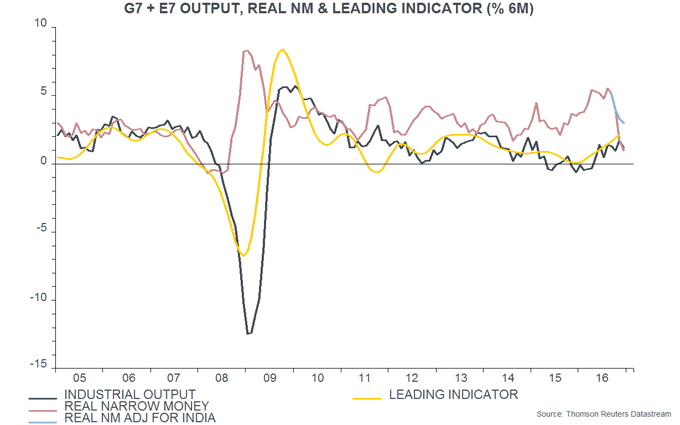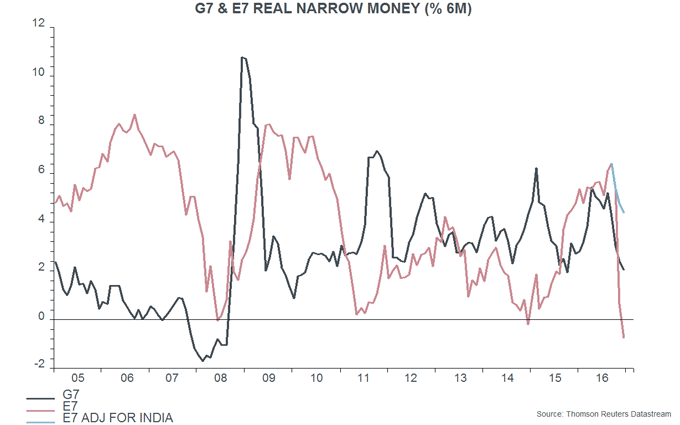
Henderson: Global money trends cooling
Global six-month real narrow money growth fell further in December, suggesting that the world economy will lose momentum during the second half of 2017.
07.02.2017 | 16:10 Uhr
The global narrow money measure tracked here – covering the G7 economies and seven large emerging economies (the “E7”) – has been distorted by India’s “demonetisation” programme, which resulted in a 28% fall in M1 between end-October and end-December, with a recovery now under way. This policy has delivered a short-term shock to the Indian economy but the global implications are limited. An attempt, therefore, has been made to adjust for the distortion by recalculating the global money measure keeping Indian M1 stable at its October level.
Six-month growth of this adjusted measure, deflated by consumer prices, peaked in August 2016 and fell further in December to its lowest level since October 2015. Allowing for an average nine-month lead at turning points, this suggests that global industrial output growth will peak around May and decline through September – see first chart.

The forecasting approach here seeks confirmation of monetary signals from a global leading indicator based on the OECD’s country leading indicators. Six-month growth of this indicator was still rising in November, the latest available month – first chart. The average lead time at historical turning points has been four to five months, so a peak in December or January would be consistent with a May peak in output growth. The OECD will release December data for its indicators tomorrow.
The slowdown in the adjusted global real narrow money measure has been driven by the G7 component and the US in particular – see previous post. Chinese monetary trends remained strong through end-2016, supporting E7 real money growth, adjusted for the India effect, above the G7 level – second chart. With the PBoC starting to tighten policy – as suggested in a post in December – Chinese narrow money growth may cool but the E7 aggregate may be supported by a reversal of weakness in Brazil / Russia in response to falling inflation / interest rates.




Diesen Beitrag teilen: